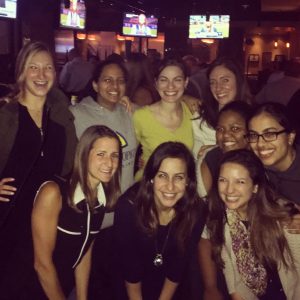Insights from Student Teacher Meiling May
The roles of student, teacher and researcher can be beneficially intersected and balanced at Johns Hopkins, as demonstrated by Meiling May.
The roles of student, teacher and researcher can be beneficially intersected and balanced at Johns Hopkins, as demonstrated by Meiling May.
The neonatal intensive care unit (NICU) can be a challenging place for parents and staff members. Explore how Kat Kowalski, NICU chaplain, helps support struggling infants and those connected to them.
Jonathan Grima Hometown: I am a Maltese-American. I was born and raised in New York City with my three younger siblings. My parents and extended… Read More »Forbes 30 Under 30: Meet 3 School of Medicine Honorees
Recently, I had the opportunity to sit down with Kapil Ramachandran, a graduate student in the Biochemistry, Cellular and Molecular Biology (BCMB) Graduate Program who… Read More »A Conversation with Kapil Ramachandran, Johns Hopkins Graduate Student and Incoming Member of the Harvard Society of Fellows
Stepping into the Anne and Mike Armstrong Medical Education Building (AMEB), you can always count on Aisha to brighten your day. Born and raised in… Read More »Hidden Talent at Hopkins
As 2016 draws to a close and many of us look forward to spending time with family and loved ones, one cannot escape the joyful… Read More »A Time of Giving
Matching into residency was one of the greatest days of my life. Years of hard work and dedication had finally culminated into the opportunity to become a doctor and practice medicine where I wanted, and in the specialty where I fit best. A few years into being a resident, the process started over, with the fellowship application process. In almost every field of medicine, there are opportunities to subspecialize, and fellowships are one such opportunity.
Fellowships are a way for residents to specialize in a specific area of medicine or surgery. For example, if an internal medicine resident wants to become a cardiologist, he or she typically has to complete three years of residency, followed by three years of fellowship in cardiology. The same applies for other subspecialties — a pediatric resident who wants to specialize in taking care of sick neonates in the ICU would complete a neonatal ICU fellowship.
Over the summer, I had the opportunity to travel around the country with some of my greatest friends and colleagues within the Johns Hopkins Department of Gynecology and Obstetrics as we interviewed for fellowship positions in four different specialties: gynecologic oncology, maternal-fetal medicine, reproductive endocrinology and infertility, and urogynecology. Cumulatively, we received over 100 interviews. This fall, we met out matches and will be traveling far and wide to fulfill our dreams.
Typically, gynecology and obstetric residents either decide to subspecialize in a fellowship or continue their career as a general Gyn/Ob. In a study looking at residents who chose to subspecialize, data from 2012 showed that around 20 percent of residents apply for fellowship. Considering seven of Johns Hopkins’ nine residents applied for fellowship and 100 percent matched for competitive fellowship with acceptance rates averaging about 69 percent, we matched very well this year!

Although my colleagues and I applied for a variety of subspecialties at many different institutions, in reflecting on why we each chose a specific career path, three things were consistent. We picked these specialties because of the “patients, procedures and problems,” and the way our careers will allow us to interact with and influence all three.
Ultimately, I chose to become a gynecologic oncologist because I love the patients, the procedures are inspiring, and the problems presented in treating their illness are challenging and complex. The fact that all of the residents and one fellow who applied into these subspecialties were placed in competitive fellowships is a testament to the success of the Johns Hopkins residency program in training future gynecologists and obstetricians.
Read More »More Training Means More Residents Meet Their Match
The following submission is the first place winner of The Albert and Mary Lasker Foundation 2016 essay contest. You can read the original posting here. … Read More »Modern Neuroscience has the tools to treat psychiatric illness
“Now I don’t even consider myself a scientist. I’m a lawyer. But when I started, I was a scientist first.” - Gaby L. Longsworth, Ph.D.… Read More »A Career in Law for the Academic Scientist
This past month, Kevin Shenderov, a fourth-year medical student, was honored with the Philip A. Mackowiak Award for Medical Student Excellence. This award honors a… Read More »Johns Hopkins Medical Student Wins Philip A. Mackowiak Award for Medical Student Excellence